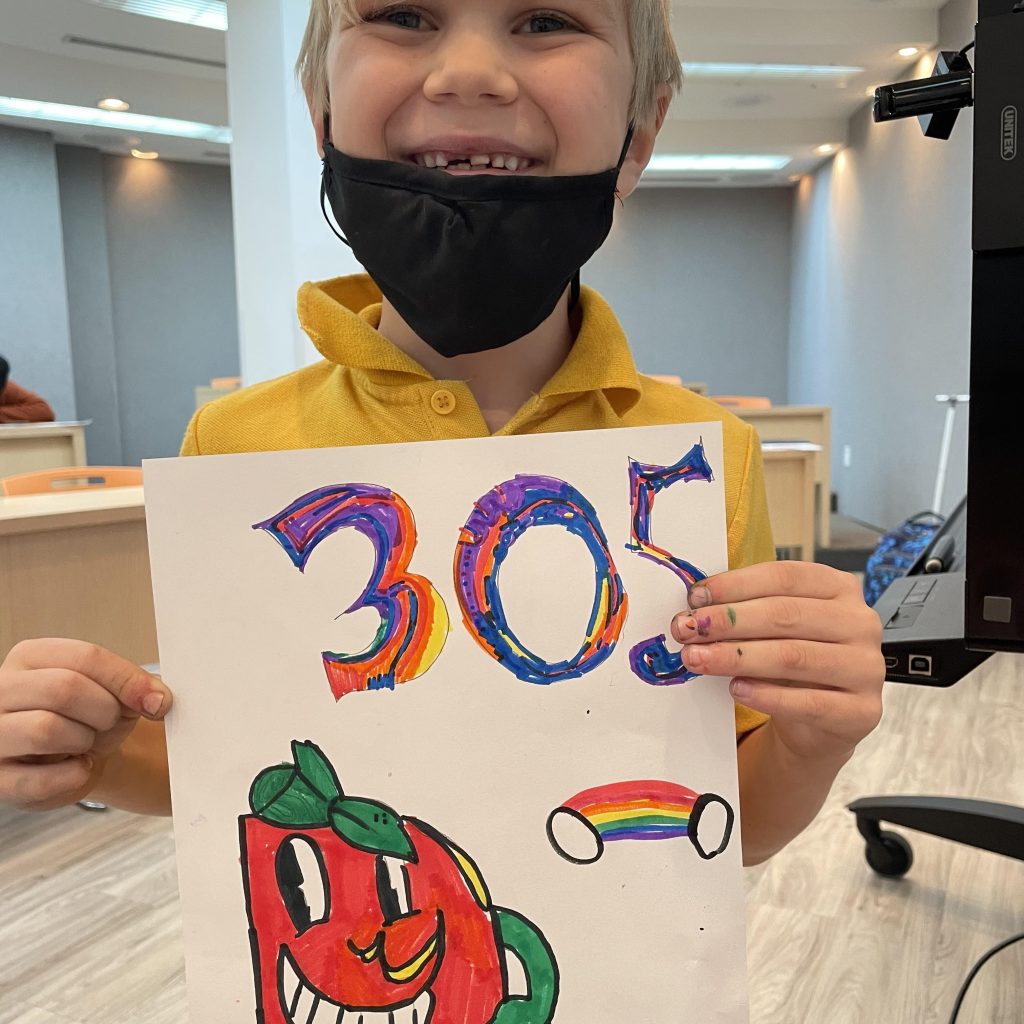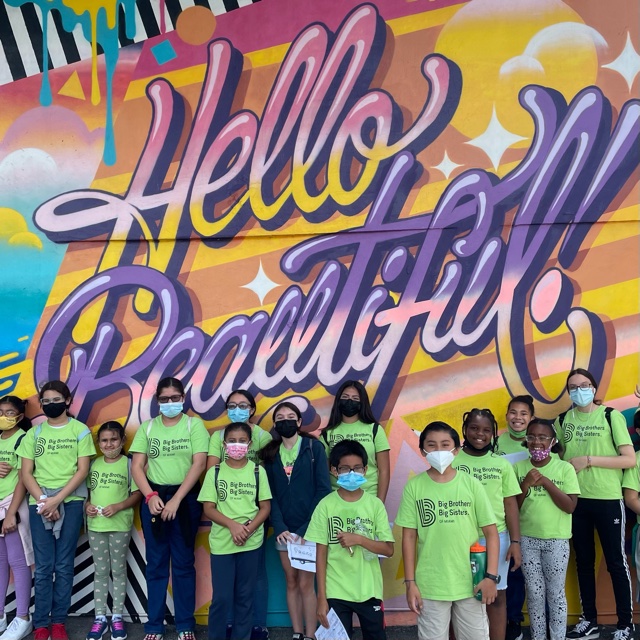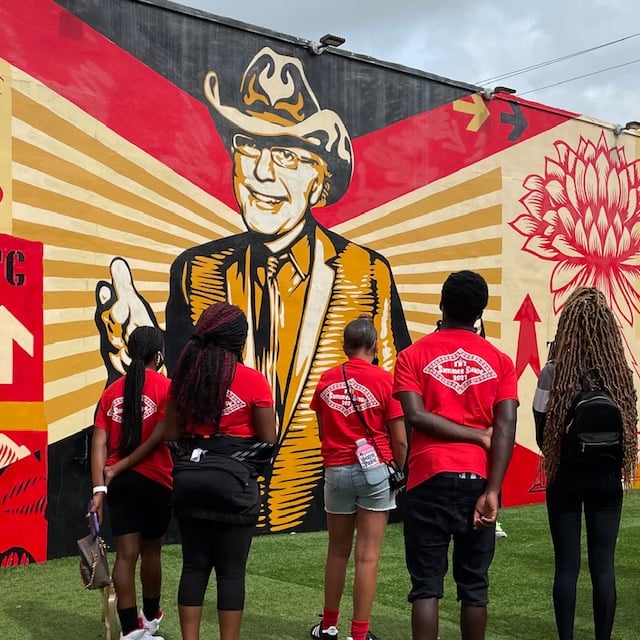Gallery Network
How Husband-and-Wife Gallerists Started a Nonprofit That Uses Comics (and Dalí) to Teach Art to Underserved Kids
Comic Kids is founded by Reed Horth and Kat Barrow-Horth of Miami's Robin Rile Fine Art.

Comic Kids is founded by Reed Horth and Kat Barrow-Horth of Miami's Robin Rile Fine Art.

Artnet Gallery Network

In 2008, husband-and-wife art dealers Reed Horth and Kat Barrow-Horth established Robin Rile Fine Art in Miami, selling works by world-class artists such as Salvador Dalí, Robert Indiana, and Joan Miró. After a decade establishing themselves in the city of Miami, the Horths decided they wanted to give back in some way. Both Reed Horth and Kat Barrow-Horth had fond memories of creating art as children, with Reed calling himself a “comic book nerd.” And so, the couple decided to establish Comic Kids, a non-profit teaching at-risk kids through comics and cartoons.
The organization, which grew during Covid, partners with Big Brothers Big Sisters of Miami, Girl Scouts Community Troops, HANDY, Branches, and other non-profits assisting at-risk and underserved youth in the community.
Recently we caught up with Reed Horth and Kat Barrow-Horth to learn more about Comic Kids.

Comic Kids visit Hello Beautiful mural at by Andrea von Bujdoss aka “Queen Andrea” at Wynwood Walls.
At Robin Rile Fine Art, you sell works by artists such as Picasso, Salvador Dalí, Joan Miró, Andy Warhol, Damien Hirst, and Banksy. Tell me about why you started Comic Kids? Why do you think it’s necessary?
We believe that it is important, when you reach a certain level of success, to send the proverbial elevator back down. So, we started Comic Kids because we wanted to help underserved kids in the Miami community specifically by exposing them to art. We have found that the arts oftentimes aren’t prioritized like other school subjects. As this is a subject we know well and are passionate about, it was a natural fit.
While there are many wonderful arts organizations in Miami we could have volunteered with, we felt we filled a specific niche: teaching children advanced art skills by learning to draw comics and cartoons. Architects, clothing designers, music producers, and car designers are all problem-solving creatives. Kids will become foundational members of society if they are given a platform to explore and develop their creative sides.
What have been your own experience with comics and cartoons? Do you have any fond childhood memories? How did comics influence your understanding of art?
We are a married couple and both of us were artistic children, preferring sketchbooks and colored pencils to other toys. We both studied art history and studio art in college before starting our company Robin Rile Fine Art in 2008. So, the arts have been a fundamental part of both of our lives for as long as we can remember.
Reed is a self-proclaimed “comic book nerd.” As a young boy, his parents had difficulties getting him to read and gave him comic books to inspire him. He became a voracious comic-book reader throughout middle and high school, and eventually became a writer and illustrator for the student newspaper at the University of Florida.
While many art dealers have family pedigrees in the arts, Reed was a military kid, moving to new military bases throughout the world every few years. So, he credits a love for reading and illustrating comics as a kid for his segue into a career in fine art. Reed was a child in the Big Brothers Big Sisters program, so it seemed a natural fit to start a non-profit to help these kids become enthusiastic about art through comics and cartoons, because that’s how he did it.

Comic Kids visit Shepard Fairey’s mural is of Tony Goldman the founder of Wynwood Walls.
What was the effect of the pandemic on Comic Kids? How did you engage the students? What is the role of digital learning and interface with Comic Kids?
Before the pandemic, we had been teaching free art classes by volunteering with non-profit organizations that were looking for after-school art classes for the children in their centers.
Ironically, Comic Kids received its official non-profit status only a month before Florida schools shut down in March of 2020. So, being creative people with a background in online sales already, we naturally shifted to an online model. Within three months we were teaching kids in Atlanta, Toronto, New York, and here in Miami via Zoom.
We hadn’t even considered this type of model pre-pandemic, but Covid provided us an opportunity to transition seamlessly into it. Because of the success we’ve experienced over the past two years, we decided to keep Comic Kids a virtual model and have expanded our live drawing classes and created new curricula with various non-profit partners in Miami and elsewhere.
More recently, we branched into teaching live classes in schools during the children’s school day. We are active in helping Title I schools (with economically disadvantaged students), but find that so many kids are art-starved that the classes have resonated with other schools as well. If a school classroom is equipped with a smartboard and webcam, we are able to teach kids anywhere in the USA, or the world.
What kinds of classes have you created so far? What art-related activities have you done with at-risk youth?
Originally we strictly taught children how to draw comic book characters: Spider-man, Batman, Shazam, etc. We would show them short clips of the behind-the-scenes animation processes of their favorite movies. That concept morphed based on the children’s interest in cartoons and anime. We have drawn every cartoon under the sun with these kids including characters from their favorite books, movies, tv shows, comics, and graphic novels.
We created a class entitled “Art History + Cartoons” where the children learned about important figures and movements in art history and drew their favorite characters in the style of the artist. We combined Salvador Dalí’s surreal landscape with Star Wars characters and drew Sleeping Beauty in the style of Pablo Picasso.
We have also started a class for children ages 5 through 8 called “Read + Draw,” reading a book to the students then drawing the characters in the style of the illustrator. One initiative we are also excited about is the field trips we have taken our students on including an exterior art exhibit called “Illuminate Coral Gables,” the Van Gogh exhibit, the Wynwood Walls, and the Lowe Art Museum at the University of Miami.
We truly believe in a broad art curriculum to inspire children. You never know when it is suddenly going to “click” for them.
How do you fund Comic Kids?
At the moment, Comic Kids is completely self-funded. We have taught paid classes that were open to the public if they wanted to help fund free classes for underserved children. Our goal is to be able to provide Comic Kids’s service to schools and nonprofits without any financial burden being placed on them. People’s eyes always light up when they ask us, “How much is this going to cost?” and we say, “It’s free for you.”
What we really want is partnerships with major contemporary artists to sell their artwork with the profits benefiting Comic Kids. We have a well-oiled machine in place already for this through our company, so the transition could be pretty seamless. We are looking to create more classes, hire more teachers, take children on more field trips, and give economically disadvantaged youth free art supplies. Bit by bit, everything helps.
Why do you think art classes are necessary for underserved communities?
We find that underserved communities lack resources and simply don’t have the disposable income for art classes. Most public schools in our own community do not have art classes until the second grade, if at all. If kids are not exposed to art, how will they learn about it? We will have a generation of kids taught to take tests but not think creatively. Comic Kids is looking to change that.
What are your hopes for Comic Kids in the future? Do you want it to expand?
The world is forever changed after the pandemic. I think we have all seen the benefits of working remotely. So, our goal is to reach as many kids as possible with our programming. We want to provide free classes to kids worldwide and fund them through contemporary art sales.
Teaching our first class with 100 first graders at the same time was eye-opening and incredible. If one teacher at Comic Kids can teach over 1,000 students art in a week, imagine our reach if we had ten teachers, or 100. The possibilities are truly boundless.